How to wash a staple dress. Staple fabric and its characteristics
Staple fabric - what kind of material, we will give a description with a photo, reviews, composition and characteristics, we will find out if it stretches or not - all this is in the article on the site. Judging by the description and reviews of the staple fabric, we can talk about its fairly high demand in the modern market. The production of this fabric material is based on cotton and viscose. A combination of natural and artificial fibers allows you to give textiles good working and performance characteristics. Often, many manufacturers can also add synthetic fibers lavsan, which allows you to make clothes more elastic, easy to wash and iron.
In the photo, the staple fabric is usually presented in the form of colorful, multi-colored textiles, which indicates the versatility of its use and the possibility of dyeing in various colors.
Speaking about the staple fabric, it is important to note that the textile got its name thanks to the yarn from which it is woven. This yarn is woven from short fibers of the same length.
Composition and description of staple material
In any description of the fabric, it is noted that it contains cotton and synthetic fibers in the same proportion. However, some manufacturers can combine natural and artificial fibers in different proportions(for example, 40/60, 30/70). On the market you can find matter consisting of 100% cotton, but it will not have all the declared advantages.
This textile is usually used for making clothes for women and men:
- Summer skirts and sundress.
- Clothing with voluminous sleeves and flounces (for example, blouses).
- Men's shirts, pajamas, shirts, home outfits.
- Children's clothing and more.
If you are interested in upholstery materials, then be sure to check out our article on. 
Photo, description, advantages and disadvantages of staple fabric
Important advantages of this textile fabric are:
- Silkiness, lightness, softness.
- Possibility of coloring in various colors and shades.
- Possibility of drapery.
- UV resistance (does not fade for a long time).
- Well absorbs moisture and passes air.
- Versatility of use for various purposes.
The disadvantages include the relative complexity of care, washing and ironing, so these processes should be taken as responsibly as possible.
When talking about whether a staple fabric is stretchable or not, the composition must first be considered. If it is traditional (50% cotton, 50% artificial fiber), then it will stretch well.
You can clarify how to properly care for the staple fabric in the specialized section of our website "", where this issue provides the most complete information. 
What is a peach staple?
Even many people working in the textile industry do not know what it is. This is one of the varieties of the material we are describing, which in last years actively used for the production of light women's and children's clothing (blouses, pajamas, blouses, etc.).
If you bookmark our site, you can learn a lot new information about different types of textiles.
A very interesting story about this textile, see:
In the fifties of the XX century, the active production of the staple began. This is the simplest fiber 40-45 mm long used in industry. Staple clothes, looks natural and light. The fashion for the use of this fabric is returning again, in the article we will try to figure out why.
What is a "staple"?
The parameters of the fabric depend on the fiber used to create the fabric, the parameters of the thread, the type of weaving and the manufacturing technology.
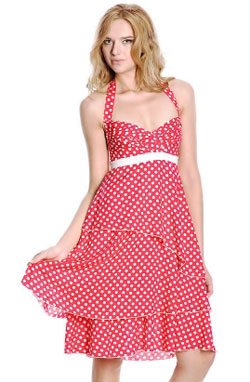 The staple is soft, light and dense material, which may include fibers of other tissues. To create a fabric, traditional plain weaving is used, and shortened fibers can also be used.
The staple is soft, light and dense material, which may include fibers of other tissues. To create a fabric, traditional plain weaving is used, and shortened fibers can also be used.
Very dense, but light and soft fabric, lends itself well to drapery, and has a pleasant to the touch surface. It resembles wool, but feels soft and delicate to the touch. Sufficiently elastic and stretches well, which allows it to take desired shape and hug your figure.
Apart from affordable price fabric has other advantages:
- The material does not wear out, does not fade in the sun, does not shed when washed, does not stretch during use. It retains its color very well after many years.
- It is a decorative fabric - a huge selection of colors and prints, a silky and smooth surface gives things a beautiful appearance.
- Hygroscopicity - cools the skin in hot summers and absorbs moisture well.
- Permeability - on the hottest day, the fabric allows the skin to breathe, giving comfort and coolness.
Fabric structure
 The staple fabric is textile fibers small length (40-45 mm), which are used to create yarn, and other non-woven materials. The fibers are of artificial (viscose) and natural (cotton, wool) origin.
The staple fabric is textile fibers small length (40-45 mm), which are used to create yarn, and other non-woven materials. The fibers are of artificial (viscose) and natural (cotton, wool) origin.
Staple fabric is of several types:
- Classic or mixed look. The composition includes viscose, cotton, you can add lavsan.
- Cotton. Made from 100% cotton. The fabric passes more air, does not cause irritation. Cons: does not stretch, wrinkle a lot. Despite some shortcomings, this type of staple has the best tactile sensations and appearance. By using cotton fiber, manufacturers can create a thin, light and soft material with a smooth surface.
In the manufacture of raw materials can be long fibers of other fabrics, such as: viscose, cotton, lavsan.
In classic fabric composition, includes natural cotton fiber and viscose, which is obtained from wood pulp. They are added in a 50/50 ratio.
To give elasticity staple, lavsan is added to it, but in a smaller amount: 50% cotton, 30% viscose, 10% lavsan.
Modern manufacturers change the fabric recipe. You can see a staple made entirely of cotton fiber or with minor admixtures of other materials: 80% cotton, 20% lavsan and viscose.
The classic version of the fabric stretches quite badly, since this is not the main function of the fabric. Manufacturers can add various additives when creating a staple (vorin, elastane, lycra), which allows you to give the staple a stretch effect. It is necessary to check the product tag for the presence of elastic materials.
If you want to buy tight clothes from this fabric, you should choose clothes one size up, this will insure you against shrinkage of the product in the washing field.
Staple application
Staple- a very common fabric that is often used in the clothing industry. From the fabric create durable, beautiful and comfortable wardrobe items:
- summer children's clothing;
- summer dresses, blouses, skirts for women;
- summer shirts for men;
- casual clothes, dresses, bathrobes;
- pajamas.

Almost any clothing intended for summer season, can be sewn from a staple. It does not fade in the sun, cools the skin in hot weather and looks very nice.

Due to its widespread use, the fabric began to be counterfeited with low-grade synthetic materials. The fabric is affordable (one meter can be purchased for 250 rubles). The supply of high-quality staple is carried out by Turkey, Korea, Indonesia and domestic manufacturers.
Clothing made of staple fabric is perfect for both women and men. From this material for girls they create magnificent long skirts on the floor, dresses above the knees and sundresses, which can be perfectly beaten with accessories and jewelry. Ethnic ornament, lace and floral motifs will look harmonious. Such outfits in the Russian style are perfect for the image of a business lady.
For men, short-sleeved shirts and shirts are made from the staple. A solid top in discreet pastel colors is suitable for the office, and you can experiment with various colors and prints in everyday life.
Fat people should refrain from too bright outfits and ornaments. The best solution would be small patterns on a dark muted background, or vertical embroidery. Girls should not buy floor-length dresses, as they will give an unnecessary grounding effect.
The naturalness and comfort of staple fabric clothes are increasingly attracting the attention of people of different age categories.
Comparison with other fabrics
 What is the difference between staple and viscose and cotton? First of all, the origin - staple and cotton are of natural origin, but they are artificial. Create viscose from wood and a chemical solution, in the process of cooking. Cotton is a natural fiber that comes from the cotton plant.
What is the difference between staple and viscose and cotton? First of all, the origin - staple and cotton are of natural origin, but they are artificial. Create viscose from wood and a chemical solution, in the process of cooking. Cotton is a natural fiber that comes from the cotton plant.
The next difference is the operational characteristics of fabrics. Viscose tends to stretch, quickly wrinkle and wear out. These qualities are also characteristic of cotton, like deformation and shrinkage after washing. In addition, in daylight, one can notice the characteristic yellowness of cotton fabric, which is not typical for a staple. The fabrics are also similar to each other, they are distinguished by softness and lightness, good air permeability, ease of coloring and durability. This can be explained by the fact that their fibers, as impurities, are added to each other during production.
Fabric care
If the cotton is without a large amount of additives, then the item will shrink by 4-6% after washing. You should use anti-shrinkage products, or buy products several sizes larger. If lavsan is present in the composition, slight shrinkage (0-1%) is possible. When creating things from this material on your own, first of all, the fabric must be washed and dried, then ironed and proceed to cutting.
How to wash the staple correctly:
- it is best to wash the fabric with your hands at a temperature of up to 40 degrees; when machine washing, you need to select a delicate mode;
- wring out by hand, as a wet staple can be easily damaged;
- it is necessary to iron from the inside through gauze.
Staple- high quality fabric, the main thing is not to forget how to properly care for it, and then it will serve you for many more years.
Each fabric has its own set of characteristics, depending on the fiber used, the type of weaving, thread parameters and manufacturing technology. Based on the properties, the scope of the material is also determined, whether it will be universal, for all occasions, or it will occupy a narrower niche. One of these narrowly targeted fabrics is a staple, which in no way detracts from its merits and does not reduce its popularity.
It is not known exactly where the staple first appeared, but in the last century it was at the peak of its popularity in the Soviet Union. And now there is a consistently high demand for it. What it is? What is this fabric?
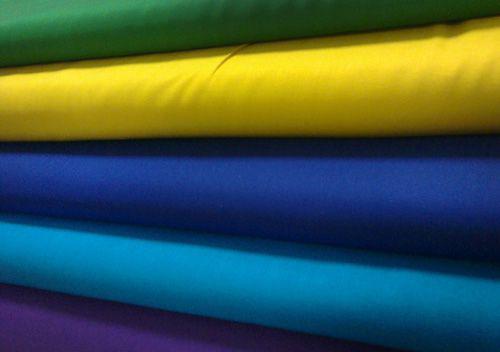
The material has a traditional plain weave, but shortened fibers are used. Waste from the production of other fabrics, where only a long fiber is needed, can act as a raw material. The staple is quite dense, but thin and light, drapes well, with a pleasant to the touch surface. A little like wool, but softer and more delicate. It stretches well and is elastic enough to fit and hold its shape. People's love fabric provided not only accessibility, but also other advantages:
- Wear resistant- does not fade, does not shed, does not stretch. Colors are like new after multiple washes.
- Decorative- manufacturers offer hundreds of colors, there are plenty to choose from, and the silky surface provides a decent look for things.
- hygroscopic- absorbs moisture well, cooling the skin.
- Permeable- allows air to pass through, allowing the skin to breathe freely without steaming, even on a hot day, giving a feeling of coolness and comfort.
The bulk of the bathrobes of our mothers and grandmothers were sewn from staples. He always had bright colors and a penny price, so at every opportunity the material was collected by meters.
The classic composition of the staple is a mixture of natural cotton fiber and viscose obtained from wood pulp - 50/50.
The ratio of 60% cotton and 40% viscose was less common. To give elasticity to the staple, lavsan was added, but in a much smaller proportion: 50% cotton, 30% viscose, 10% lavsan. Current manufacturers freely interpret the recipe, you can also find a completely cotton staple or with a slight admixture - 80% cotton and 20% viscose or lavsan.
In the photo - staple fabric:
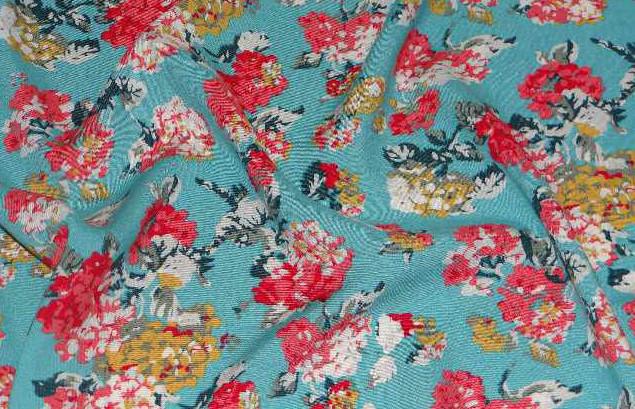
Application - what is sewn from the material?
As before, the staple is a sought-after raw material for the light clothing industry; beautiful, comfortable and durable wardrobe items are obtained from it.
- Summer children's clothing;
- Women's summer sundresses, dresses, skirts, blouses;
- Men's summer shirts;
- Daily wear: robes, dresses;
- Summer night pajamas.
Almost any clothing designed for the warm season can be sewn from staples. It does not fade in the sun at all, pleasantly cools heated skin, looks beautiful.

Due to the popularity of the material, the staple was often faked, passing off as low-grade, synthetic fabrics. You should not be led to a too low price, with its availability, a running meter costs at least 250 rubles. In addition to domestic manufacturers, high-quality staple is supplied by Korea, Turkey and Indonesia.
Types of staple fabric

Staple is of two main types, depending on the composition:
- Mixed (classic)- in the composition of cotton with viscose, the presence of lavsan is possible. Usually, this is a domestic material, we have enough viscose in our country, but worse with cotton.
- Staple cotton- Pure 100% cotton. Better breathability, does not threaten irritation even the most sensitive skin. The disadvantages include loss of elasticity, strong creasing. Such a staple is usually imported, with foreign partners everything is fine with cotton, but with viscose it is strained, and the technology is lame.
Despite the shortcomings, the cotton staple wins in terms of tactile sensations and appearance. Using one type of fiber allows you to get a thinner, lighter and softer fabric, with a perfectly smooth surface.
Staple care

Being natural, the material has its own characteristics, which must be taken into account when leaving.
- Washing on a delicate mode or by hand, at temperatures up to 40 ° C, when choosing a detergent, you should give preference to gentle ones that do not contain aggressive substances.
- press better with hands, be careful, as the staple is easily damaged when wet.
- Iron from the wrong side, preferably through gauze or other fabric.
The staple has a noticeable shrinkage, you should not buy a tight-fitting thing, after washing there is a chance not to fit into it. If sewing on your own, first rinse the cut in cool water and dry it. Iron a slightly damp cloth without stretching with a warm iron. After such manipulations, it is easier to cut, and in the finished form, if the product sits down, then slightly.

Hello, friends!
For me staple(not to be confused with a spatula) is associated with the warm feelings of childhood. Bright dresses mothers, colorful robes grandmothers, light baby dresses, MMM…
But, it would be unreasonable to assert that the commitment to this material is supported only by childhood memories.
I propose to conduct a sewing investigation and find out the answers to the questions:
- Staple - a fabric with ideal properties or just a distant echo from the past?
- Is it possible to use staple fabric today and not seem old-fashioned?
- What does the modern textile and light industry offer us in relation to the staple?
The case about the spatula, oh, about the staple, I consider it open ...
To begin with, I propose to play a short game of guesswork.
Look at the images below and immediately try to identify:
Which option did you choose?
Is it easy to identify a thing from the above staple?
If yes, congratulations! You must be a material science guru.
If not, don't despair! You are not alone.
Actually, it is not easy to determine from the image what material a thing is sewn from. Especially if, for example, “I have never heard of” such a fabric.
We will return to the experiment with determining the type of material at the end of the article, where you will practice your erudition again.
But in order for the determination of the type of fabric to be honest, I will tell you as much information as possible. on the properties and application of the staple.
Such a difficult task: you - study the material carefully, I have - to talk about the staple in an accessible, understandable, interesting and most complete way.
Let's get started!
To learn to recognize a staple, you need to get answers to the following questions:
What is a staple?
What is the composition?
What are the main properties of the fabric?
Advantages and disadvantages of a staple?
Where is the staple used?
How to care for staple products?
I like to "dig deep" in my sewing investigations, "the case of the staple" was no exception.
First I turned to the dictionary - it's a very tricky word - "staple".
Turned out the word "STAPLE" German origin - Stapel — stack, heap, bundle of fiber.
The word has several meanings:
Let's pay attention to the last two values!
Looking at them, it becomes clear that we are interested in A staple is a fabric that gets its name from the yarn from which it is made. In turn, the yarn is woven from short staple fibers one length.
What is the secret of staple fibers?
To work out chemical fiber, a viscous mixture is passed through thin holes called spinnerets. At the exit, the mixture hardens, turning into thin and strong threads.
Roughly, this is what it looks like:

For staple fiber spinnerets with a significantly larger number of holes are used (from 2000-12000, for comparison - in the manufacture of complex threads, dies with 24-100 holes are used), hence starts to increase productivity spinning machine and reduce the cost of production.

Feature of staple fiber also in the fact that the threads collected from several spinnerets form bundles, which stapled(cut or torn) into separate short (from 35 to 70 mm.) fibers are staples.

Here is the clue to the name!
The resulting segments of fibers - staples, close in length to natural wool and cotton fibers. And the yarn from them is more uniform, therefore staple fiber fabrics have good hygienic and heat-shielding properties, are soft and pleasant to the touch. But, about the properties below…
Let's move on to the composition of the staple.
The staple can consist of several types of natural and artificial fibers. Most often, a mixture of viscose and cotton is used in the staple fabric.
| Description of the production and properties of viscose, read in this article |
In modern production admixture of lavsan fibers is allowed(not more than 10%), and for the elasticity of the material, in small proportions, admixtures of vorin, elastane, lycra can be added etc.
Viscose threads made from cellulose cotton — natural ingredient, lavsan adds strength and improves fabric characteristics. Due to the presence of this synthetic component, the staple is less prone to shrinkage, does not fade and is more resistant to contamination.
Let us consider the properties of the staple in more detail.
Combination of natural and man-made fibers gives the staple such unique properties, how hypoallergenicity, softness, silkiness, breathability, plasticity, lightness, resistance to light and high temperatures.
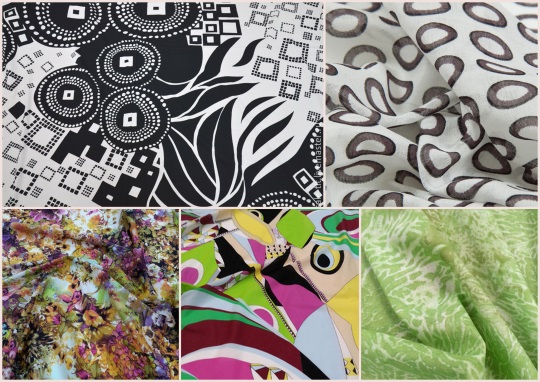
Thanks to the dye is added at the spinning stage to the solution from which the yarn is cast, the staple retains its bright color even after repeated washings.
Staple cloths are of several types:
- plain dyed;
- colored;
- With printed pattern.
These properties, along with increased thermal conductivity and a variety of staple colors, make the fabric unique, practical and popular so far.
Image enlarges on click and you can see the material in all its glory.
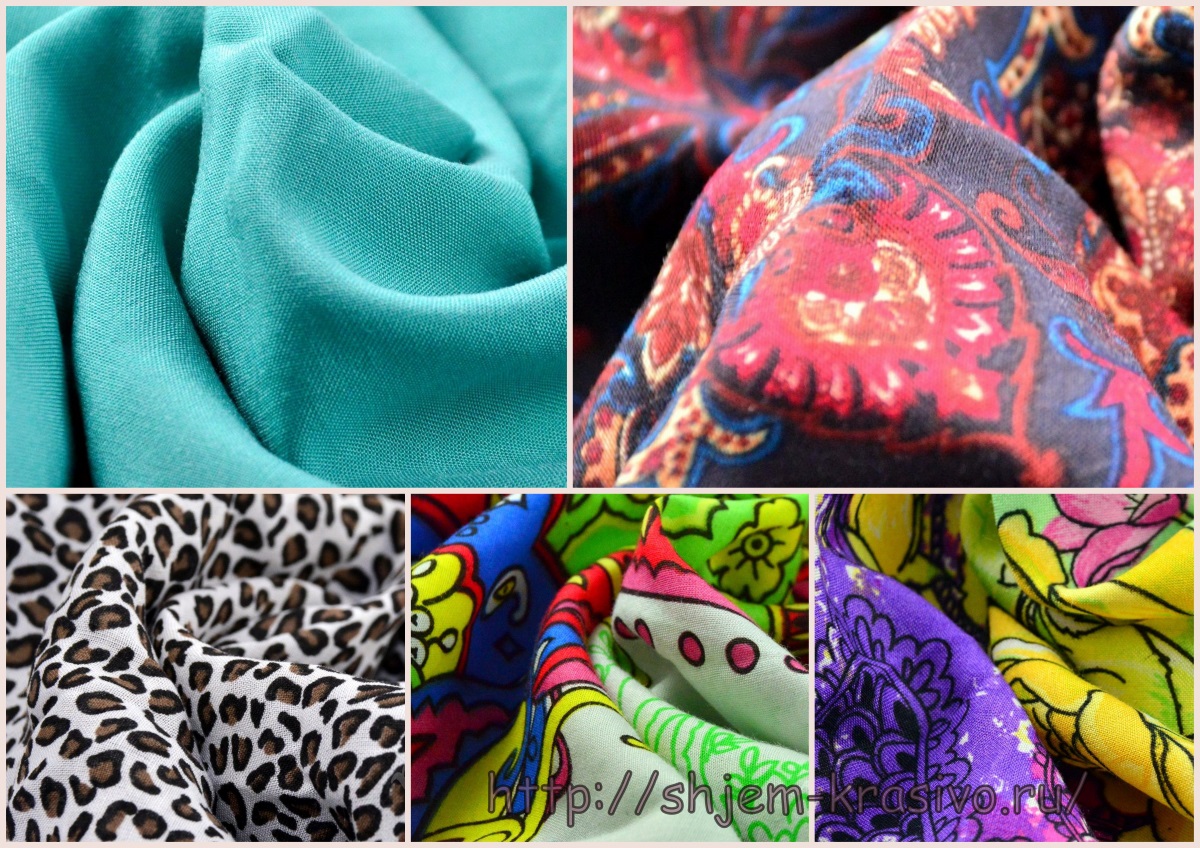
Appearance (and feel too) the staple is similar to woolen fabric.
The staple has a lot of advantages:
- The fabric keeps you cool in hot weather;
- Well passes air and absorbs moisture;
- Perfectly absorbs excess moisture;
- Resistant to sunlight, does not fade;
- The fabric is soft, light and silky;
- Dyed in a large number of colors and patterns;
- Drapes beautifully and gently flows over the body;
- It has a relatively low price.
True, the staple has several disadvantages:
- Sufficiently high shrinkage (4-5%). True, in modern production, the fabric is impregnated with a special composition and the fabric is much less susceptible to shrinkage.
- Loses its strength when wet. Items must be washed with extreme care.
- Easily wrinkled. But on own experience I will say that it is enough to wash a thing from a staple. After that, she wrinkles much less.
| Note:
It happens that beginners are "scared" by the difficulties when sewing things from a staple. I agree that the staple, despite all its wonderful properties, the fabric is a little capricious in processing. Little bit. But even then, only at first.
It is worth "filling your hand", getting used to its structure, making a few trial seams and all the capriciousness of the material will disappear. In an article on sewing a staple blouse (link below), I share my ways of "taming" fabric. |
If the previous points allowed you to pay attention to the staple, then you will certainly be interested in the areas of application of this fabric.
What can be sewn from a staple?
The range of products is quite diverse.
From it you can sew:
- Women's clothing- skirts, blouses, dresses and sundresses. Due to the excellent drape and richness of colors, things look beautiful and elegant. And excellent thermal conductivity will make you feel comfortable even on a hot day;
- Children's clothing- skirts, shorts, dresses, light blouses. Air and vapor permeability, thermoregulation provide comfort and coolness to the child in the summer. Children's staple clothing is comfortable and hygienic. And the low cost of the fabric will significantly expand the wardrobe of the child.
- Men's shirts— comfortable, beautiful, pleasant to the body.
- Bathrobes, pajamas. The fabric is soft and pleasant to the body, so it can become great option when sewing clothes for sleep.
- Miscellaneous items household items - elegant aprons, curtains, chair covers, etc. - A variety of colors will allow you to choose a fabric for every taste.
![]()
Currently, many designers have paid attention to the range and properties of the staple. Stunningly beautiful skirts, blouses, dresses and sundresses are sewn from it. different styles, for women of different weight groups.
Flying silhouettes, flowing fabric, bright colors make staple fabric models attractive even for demanding ladies.
And the listed properties of the fabric only complement the advantages of modern staple products.
A few words about the care of fabric and staples:
- Before sewing products from the staple, it is necessary to decant (moisten and dry) the fabric to avoid shrinkage;
- To create comfort when worn, it is better to choose a free silhouette for sewing models, with the exception of a staple with the addition of elastic fibers - here you can allow a greater fit on the figure;
- When buying a finished item, you can allow the choice of a product 1 size larger to prevent shrinkage after washing;
- wash things better in delicate mode at low speeds;
- When hand washing it is not recommended to rub and twist the fabric strongly so as not to damage it;
- When washing it is better to use mild detergents;
And now, the again promised test to determine the type of material:
I confess, I was a little cunning and put, familiar attentive readers, a picture of a staple blouse I recently made (so, you know, hedged...).
But, if you have determined exactly, even without my prompting, excellent, then we got the job done!
Share your impressions in the comments(or using tab) by answering the following questions:
- Have you ever dealt with things from a staple?
In recent years, staple fabric has been gaining popularity among Russian clothing manufacturers and consumers. It is due to excellent functional characteristics and low cost. In this article, you will learn about the main features of the material and the basic rules for caring for it.
Pros and cons of such fabric
Being a material that includes cotton and viscose fibers (in equal proportions or in a ratio of 40% to 60%), the staple is an eco-friendly and hypoallergenic fabric. It is safe for people's health, does not allow germs to multiply, does not cause allergies, therefore it is exceptionally good for sewing children's clothes. Material suitable for sewing summer clothes, because it passes air remarkably and cools the skin in summer time and also absorbs excess moisture.
The staple practically does not fade and does not shed, it is soft, light, elastic and pleasant to the touch, and also drapes wonderfully. Among the minuses, we note the possibility of shrinkage by several percent (4-7) at high humidity. It also wrinkles a lot, and when wet, it is much less durable. From a similar fabric usually sew different kinds clothes.
When washing, pay attention to the possibility of shrinkage.
When thinking about how to wash a staple, do not forget about its negative property - to shrink. Very often staple fabric shrinks after washing. The materials used for tailoring suits and warm dresses tend to "sit down" most strongly compared to their counterparts. Therefore, it is better to take them to the dry cleaners, rather than wash them at home. When cleaning at home, they must be ironed wet, pulling quite strongly when ironing. The more the material contains natural fibers the more it will shrink. Usually shrinkage is noticeable along the length of the thing.
In fact, it is required to handle such matter approximately as with viscose. Wash the staple in the delicate mode at low speed. A mild detergent will do, and the water temperature should not exceed 40 degrees. Machine wash is not prohibited. Before washing the stains, carefully rub the powder soaked in water. Areas with significant contamination (shirt cuffs, collar) should be blotted in advance with a soft-bristled brush that has been moistened with a solution of soap or powder. It is necessary to wring out the thing delicately, otherwise it will stretch or sit down. When washing by hand, handle the material delicately, otherwise it can easily tear.
To avoid wrinkles on the fabric, try to wash it by straightening the folds. If clothes white color with a pattern, yellowing may occur after wet processing and drying. The old method will help to cope with the problem - adding a small amount of ultramarine for bluing. Having blued the product, wring it out well, dry it and smooth it. Also, when washing, liquid detergents are used as a priority. It is not recommended to wring and dry staple dresses in a typewriter.
Store staples in a closed space with low humidity. Dust and moisture have a negative effect on the color of such things. Appearance wardrobe items will be well preserved long time if they are thoroughly dried (avoiding direct sun rays), brush the dust, get rid of the stains and store. Store them on hangers, paper bags or cotton bags. In daily use, try to hang staple dresses and sweaters on a coat hanger - this way the clothes will remain in excellent condition and will be worn for a long time.
How to deal with shrinkage
Having a bunch of positive properties, the staple is famous for its strong drawback - it shrinks after wet processing and drying (usually in the direction of the warp). Now the material is processed in factories in a special way so that shrinkage becomes less, but for some varieties it reaches six percent, which is important when sewing. To save the size, use one of two methods. Soak the fabric before sewing, wring out a little, lay out on a sheet, straightening the folds well, dry and iron (while it is damp) without stretching.
The second way - just increase the length of the product you are going to sew by a couple of centimeters. Similarly, when buying a staple dress, choose a size larger - if it "sits", the size will fit perfectly. Twill for skirts and dresses does not shrink too much, so you don't need to soak it. It is also better not to do this, since ugly dark-colored creases may occur during the spin cycle. Iron the staple fabric from the wrong side, placing dry gauze under the iron. Do not use steam to avoid shiny streaks that look terrible on the surface. Iron from the edge, then move to the center.
- Gingerbread recipes for perfect gingerbread recipes with light icing
- How to cook zucchini caviar in the traditional way and in a slow cooker?
- Spells to call on a date Spells to call on a date
- Layer cake with chicken and cheese
- Pea soup with smoked ribs - how to cook delicious smoked soup Pea soup with smoked ribs for 3 liters
- Strawberry smoothie - useful properties and secrets of delicious cooking
- Bread in a slow cooker from whole grain flour without yeast
- Lavash roll with ham: a step-by-step recipe with a photo How to cook pita bread with ham and cheese
- Pancakes on the water: recipes with photos
- Salad with champignons and corn Salad with fried champignons and corn
- Basic techniques of suggestion by the power of thought at a distance
- Step-by-step recipe for cooking pork tongue aspic with photo
- Almond flour and dishes from it: recipes for cooking at home
- Chicken breast skewers Recipe for diet chicken skewers
- Choux pastry for eclairs and profiteroles
- Belyashi with meat - a recipe from Tatar chefs
- When the temptation is too great: marshmallow by Dukan Marshmallow by dukan agar by agar
- Nutritious and correct salad "Narcissus" Narcissus salad
- Three interesting and easy Spanish tapas recipes
- Pea soup in a slow cooker Redmond Crushed pea soup in a slow cooker









